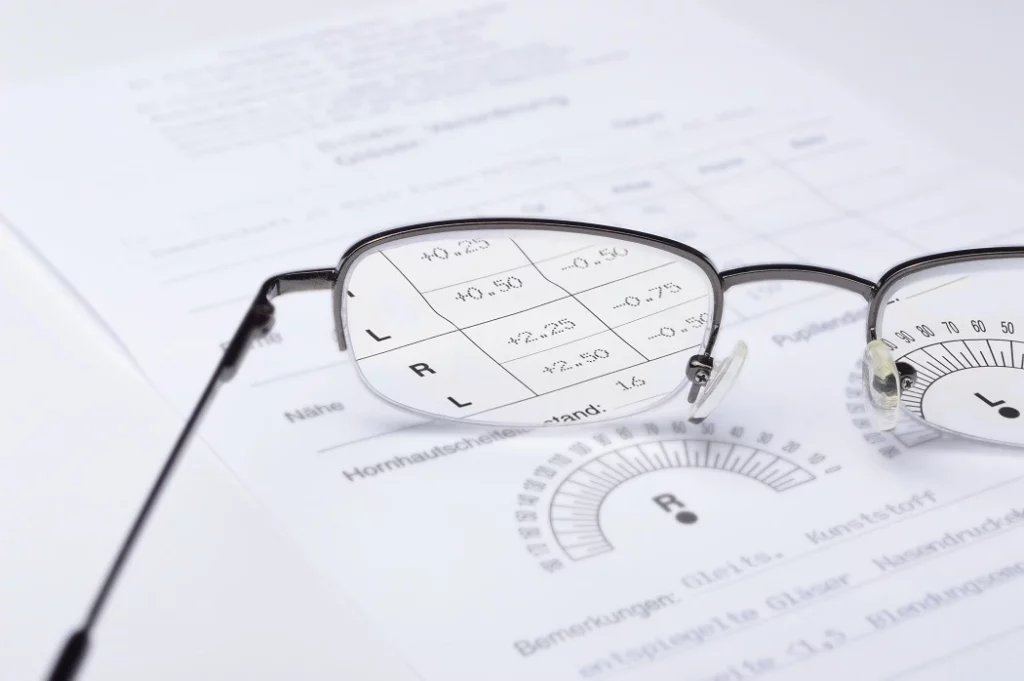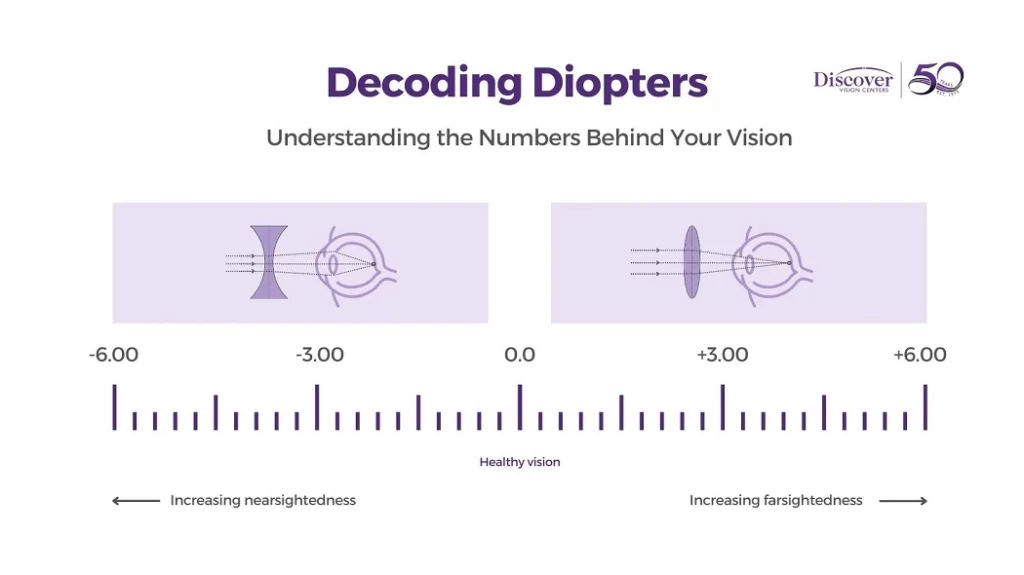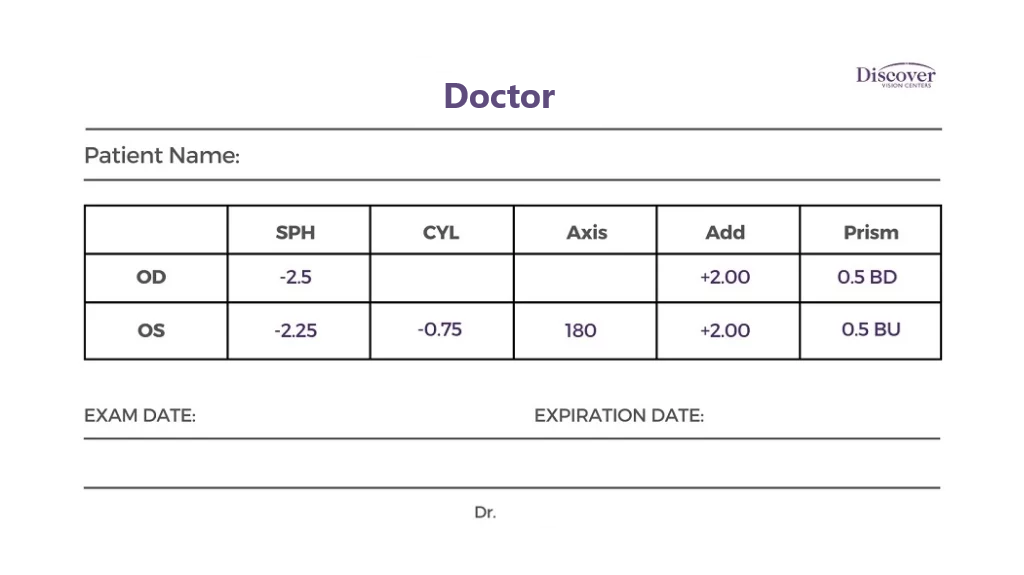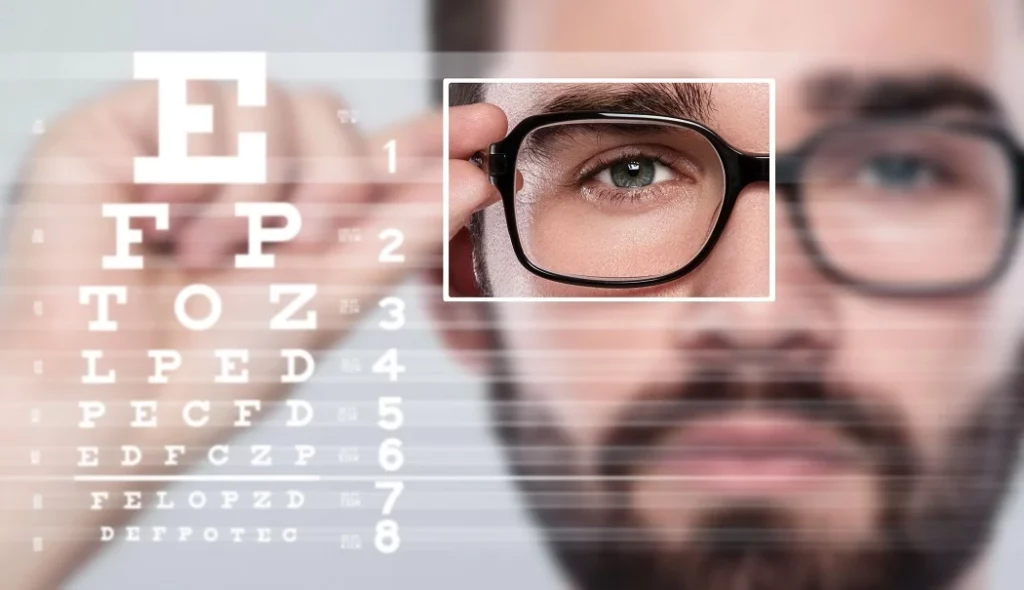
Updated: January 15, 2024

Understanding your eye prescription is essential for ensuring clear and comfortable vision. Your prescription is a set of numbers and terms that describe the specific vision correction you need. Whether you’re nearsighted, farsighted, or have astigmatism, decoding your prescription is the first step towards selecting the right lenses for your eyeglasses. In this guide, we’ll unlock the secrets of your prescription, breaking down the numbers and acronyms so you can feel confident in choosing the perfect eyeglasses. For a wide selection of quality eyeglasses in Kansas City, visit Discover Vision Optical today.
Your vision is unique, and being able to understand your eyeglass prescription is the key to experiencing clear and comfortable eyesight. This guide unveils the meaning behind those cryptic numbers and symbols to help make sense of your personalized prescription. Whether you’re nearsighted, farsighted, or dealing with astigmatism, we’ll decipher your prescription to help you choose the perfect lenses for optimal vision. Say goodbye to visual uncertainty as we help you understand the meaning of your eyeglass prescription.
Eyeglass prescriptions are essential for correcting vision problems; they provide precise guidance for creating lenses tailored to an individual’s unique visual needs. These prescriptions are filled with abbreviations and numbers, which might seem like a secret code at first. Let’s decode the most common components of an eyeglass prescription:
Your eyeglass prescription will include a combination of these elements, which provides you with a finely tuned prescription for each eye’s specific needs. Once you understand these abbreviations and numbers, selecting the perfect eyeglasses becomes a breeze.
For personalized eyeglasses tailored to your prescription, visit Discover Vision Optical in Kansas City. Our experienced professionals will help you find the ideal frames and lenses for crystal-clear vision. Don’t let vision challenges hold you back; contact us today to see the world with clarity and style.

The eye prescription scale is a vital tool in the world of eyeglasses and vision correction, as it provides a standardized way to convey an individual’s visual needs. This scale employs a few key concepts to help you comprehend your prescription:
The scale may also include additional elements, such as astigmatism correction and near- or distance-vision preferences. Understanding the prescription scale empowers you to select the right eyeglasses for clear and comfortable vision.
To obtain eyeglasses that perfectly match your prescription, visit Discover Vision Optical in Kansas City. Our experts will guide you through the selection process, ensuring you find the ideal frames and lenses to enhance your vision and style. Embrace better vision today by reaching out to us.
Understanding your eyeglass prescription goes beyond just deciphering the sphere (SPH) values for your nearsightedness or farsightedness. There are additional terms and numbers on your prescription that play a crucial role in tailoring your glasses to your specific needs. If you’ve ever looked at your prescription and wondered, “What do OD and OS stand for?” or “What is ADD in my eyeglass prescription?” then this article is for you. Let’s explore these terms in more detail below:
As you delve into the intricacies of your eyeglass prescription, it’s vital to understand these terms. OD and OS represent your right and left eyes, respectively. While SPH values are crucial for distance vision, understanding CYL, axis, add, and prism allows for a comprehensive evaluation of your visual requirements.
With this knowledge, you can confidently select the perfect lenses and frames, ensuring that your eyeglasses provide both visual clarity and comfort. To experience the full meaning and benefits of your eyeglass prescription, visit Discover Vision Optical in Kansas City. Our experienced opticians will guide you in choosing the right eyeglasses to suit your unique prescription and style.

Understanding how to interpret an eye prescription is essential when selecting the right eyeglasses or contact lenses. An example eye prescription typically includes various values such as sphere (SPH), cylinder (CYL), axis, and sometimes additional details like add and prism. SPH represents nearsightedness or farsightedness, while CYL and axis deal with astigmatism correction. Add indicates the power for near-vision correction, and prism addresses eye alignment issues. Accurately decoding these values empowers you to make informed choices about your vision correction needs and select the ideal eyewear for crystal-clear vision and optimal comfort.
Contact lens and eyeglass prescriptions are not the same, although they share several common elements. Here’s a breakdown of the distinctions:
An eyeglass prescription ensures the proper focal point for the eyes when the lenses are positioned in front of them, and they will primarily consist of values like sphere (SPH), cylinder (CYL), axis, and sometimes add. These terms indicate the amount of correction needed and the lens power for nearsightedness, farsightedness, and astigmatism.
A contact lens prescription includes a base curve and a diameter to guarantee a comfortable and secure fit on the eye’s surface. Improperly fitted contact lenses can lead to discomfort and potential eye health issues.
In summary, while there are similarities in eyesight prescriptions, the primary difference is in the way the correction is applied, with contact lenses placed directly on the eye and glasses positioned in front of the eye.

Understanding the differences between reading your eyeglass prescription and your contact lens prescription, especially regarding elements like base curve and diameter, underscores the importance of a comprehensive eye exam. A detailed eye examination ensures that the right prescription is issued and it is tailored to your specific needs, whether for eyeglasses or contact lenses. Schedule an appointment with the experts at Discover Vision for a thorough eye examination. We’ll not only provide you with an accurate prescription but also guide you in choosing the most suitable eyewear or contact lenses to enhance your vision. Schedule your eye exam and contact lens fitting today.
The term “bad” is not an appropriate way to describe an eye prescription. Eyeglass prescriptions are specific to an individual’s unique vision needs. They indicate the level of correction required for nearsightedness, farsightedness, or astigmatism. Whether your prescription is low or high, it simply reflects your particular visual condition, with no inherent judgment of being “bad.”
Eye prescriptions change over time due to age, eye health, or other medical conditions. Most commonly, vision changes as we age, leading to the need for updated prescriptions, reading glasses, or vision correction surgery. Routine eye exams are essential to monitor changes and ensure that your eyeglasses or contacts continue to provide clear vision.
We are closed Monday (05/25)! Urgent Care is also closed Saturday (05/23)!
We are closed Friday (07/03)!
We are closed Monday (09/07)! Urgent Care is also closed Saturday (09/05)!
We are closed Thursday (11/26) and Friday (11/27)! Urgent Care is also closed Saturday (11/28)!
We are closed Thursday (12/24) and Friday (12/25)! We are closed 1/2 Day Thursday (12/31). We are closed Friday (01/01).